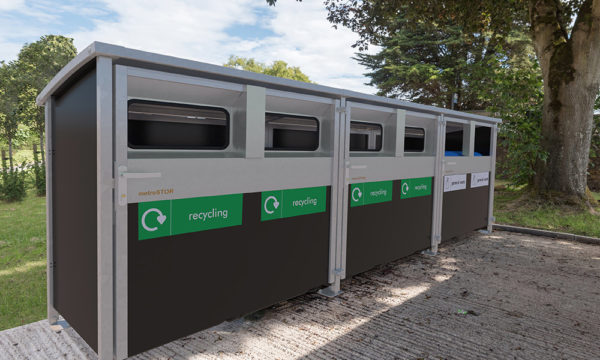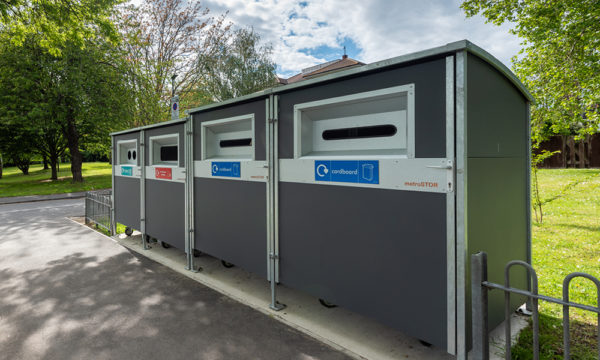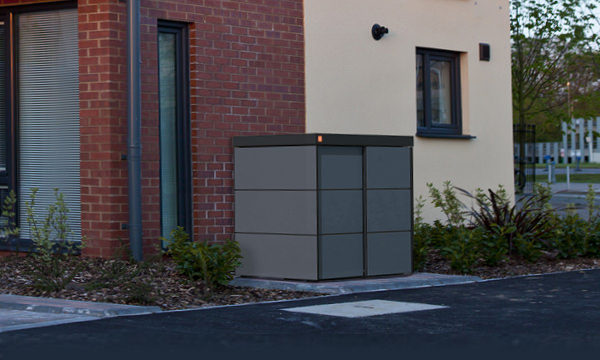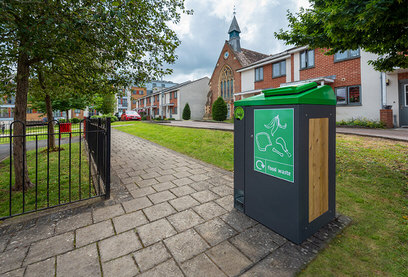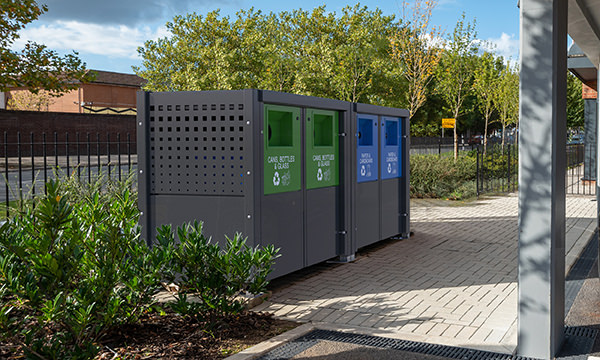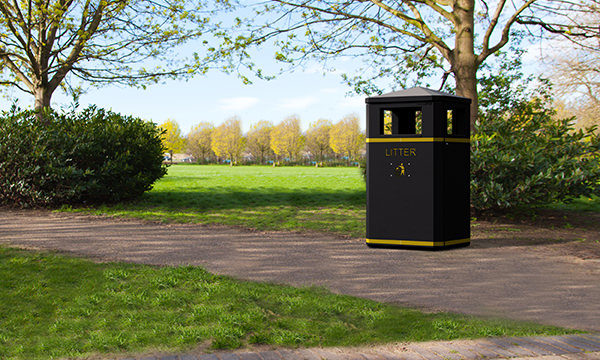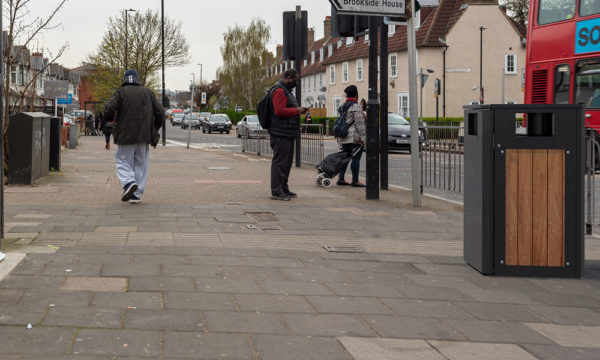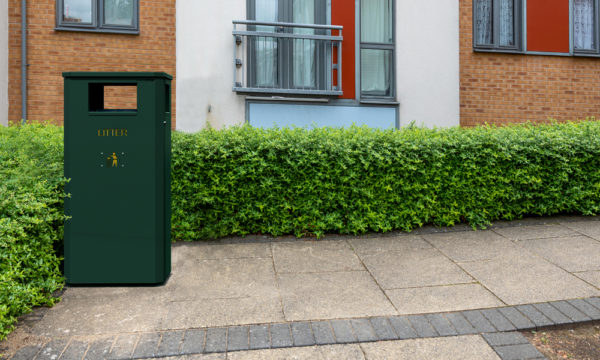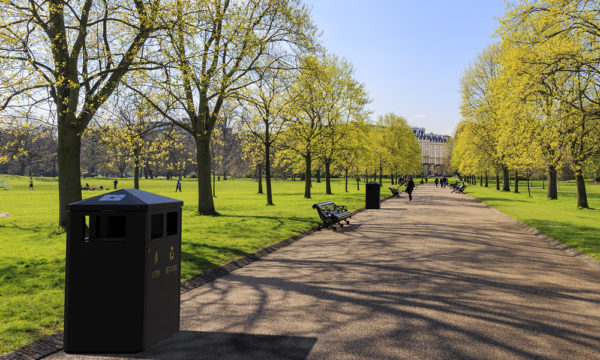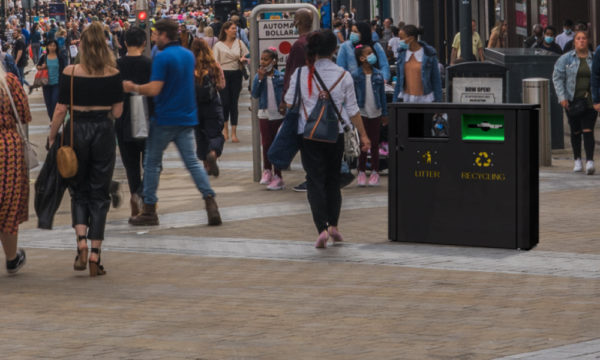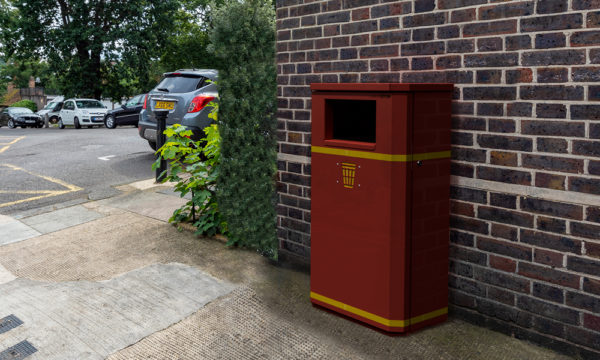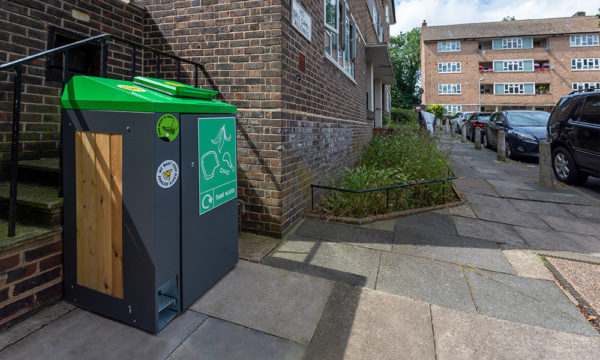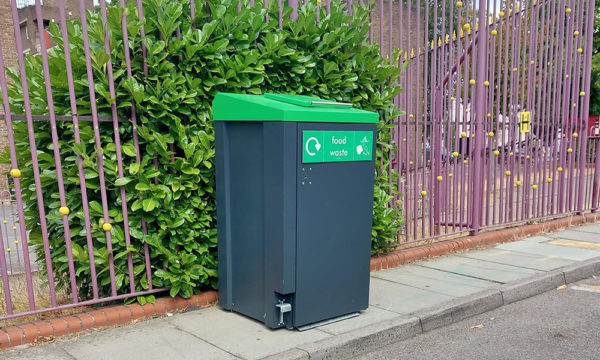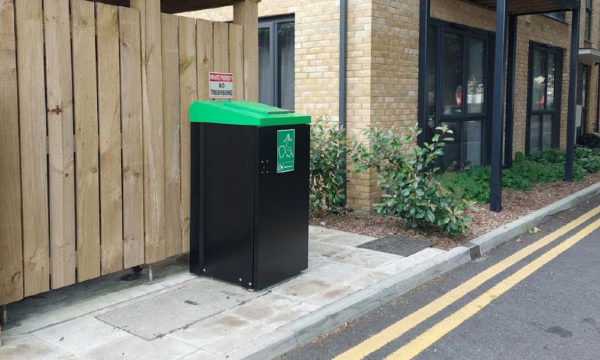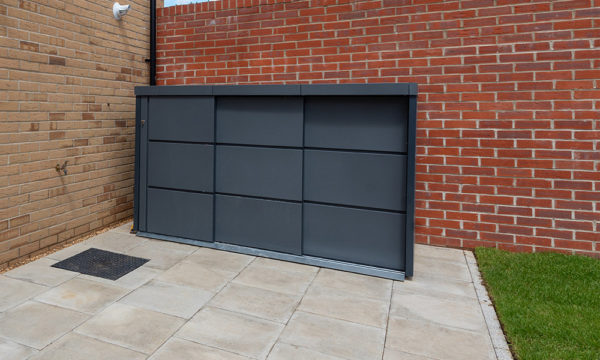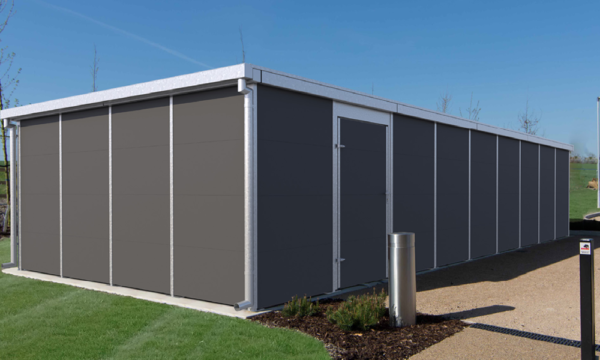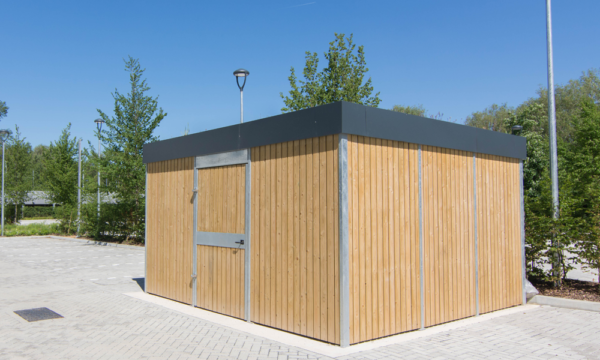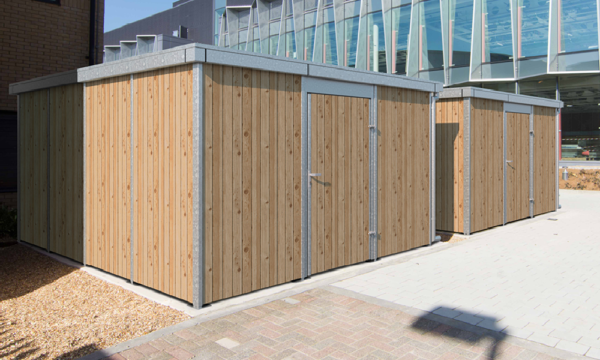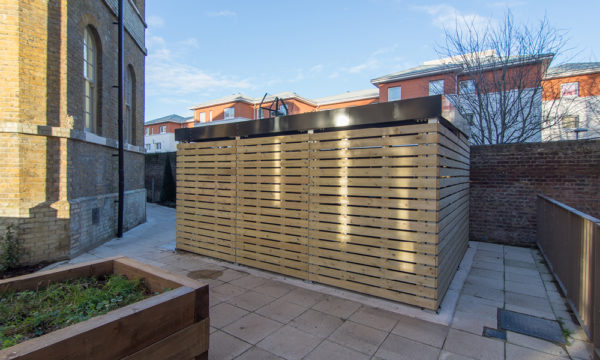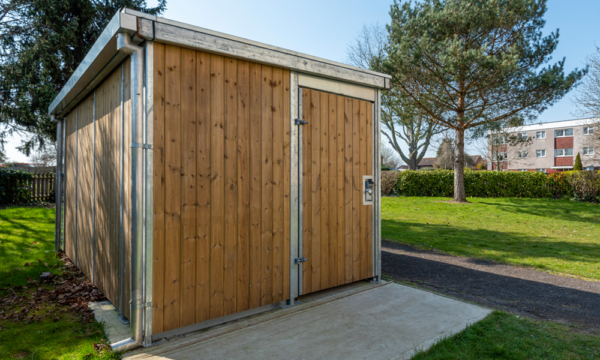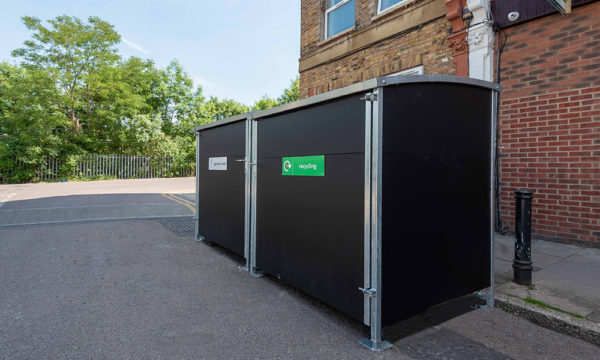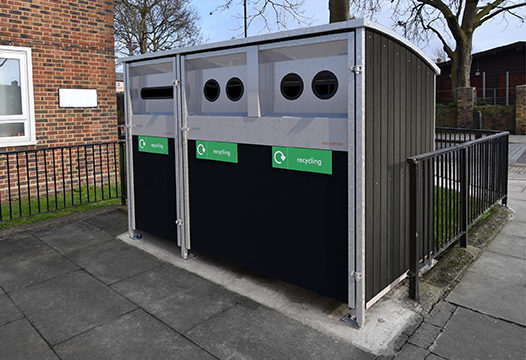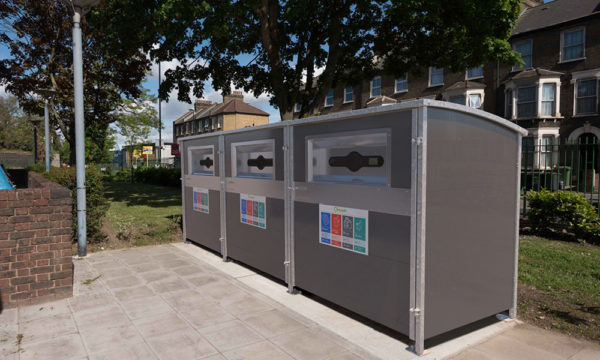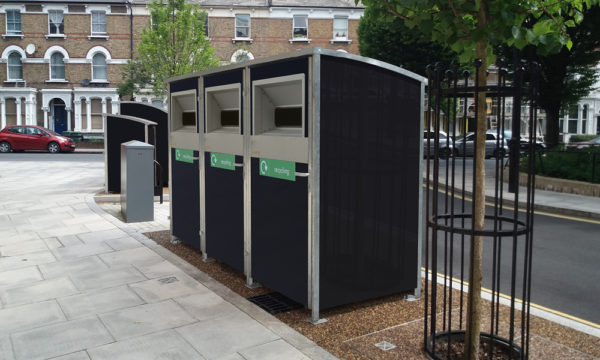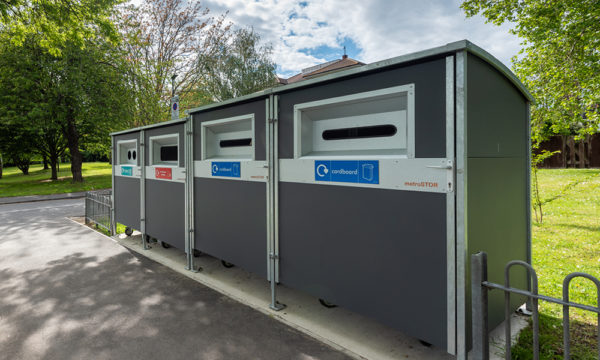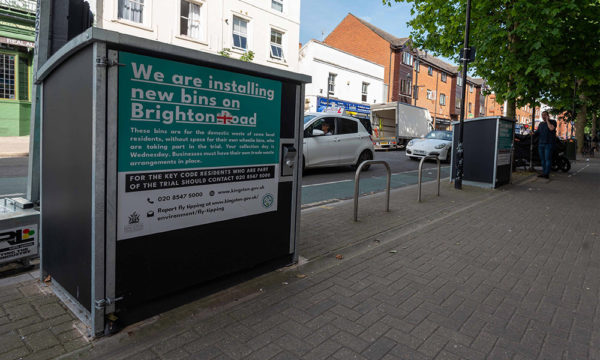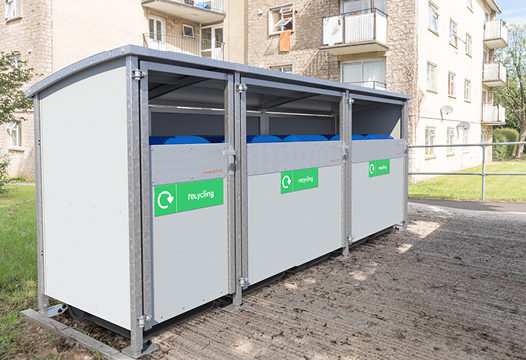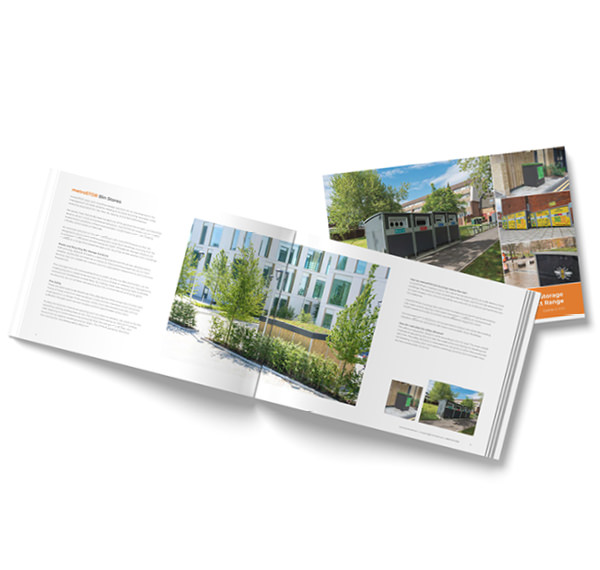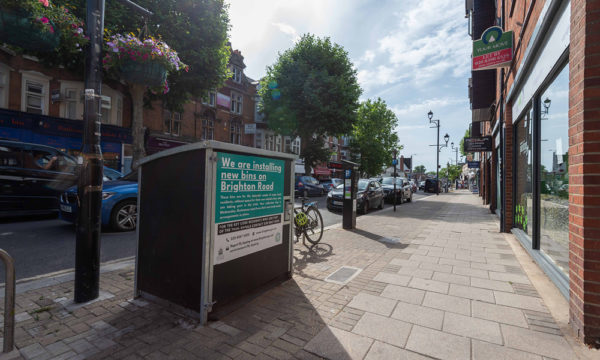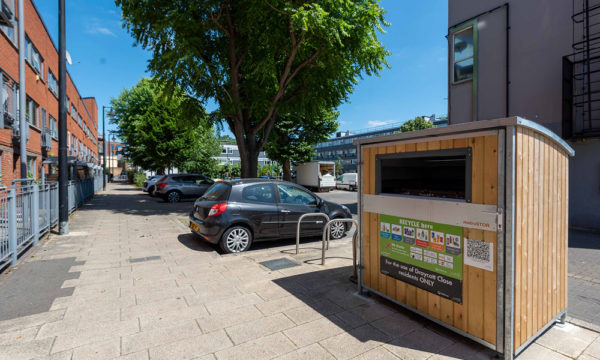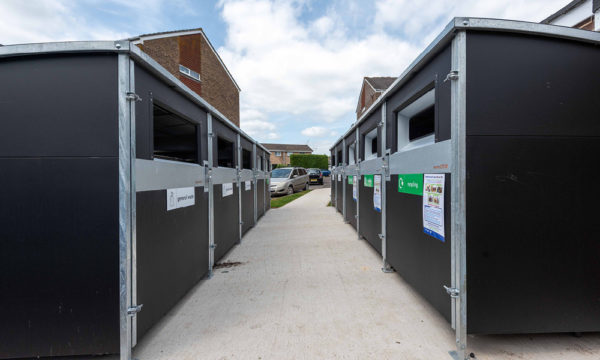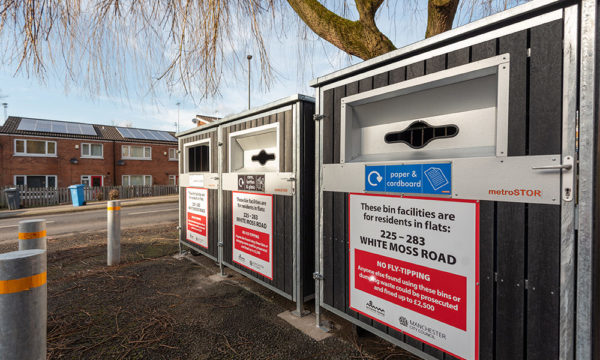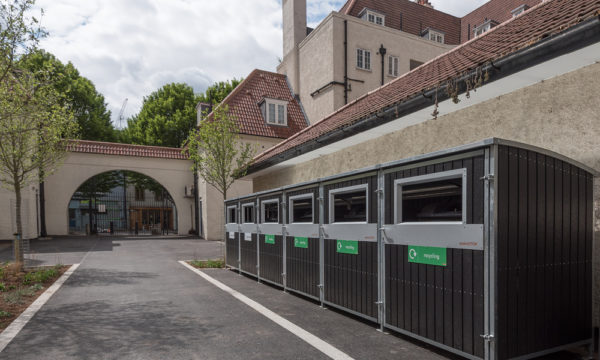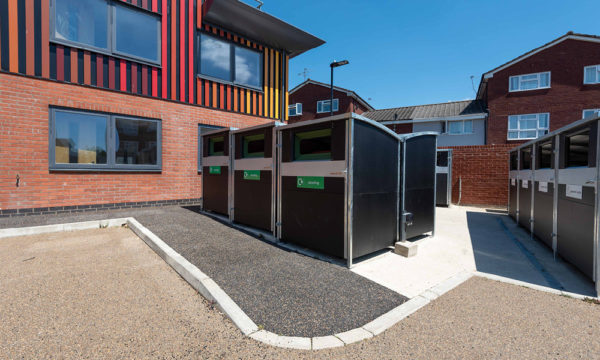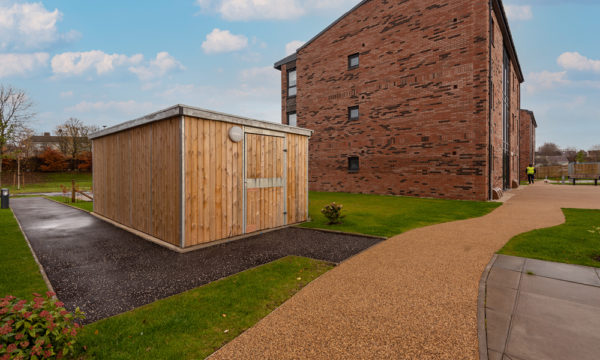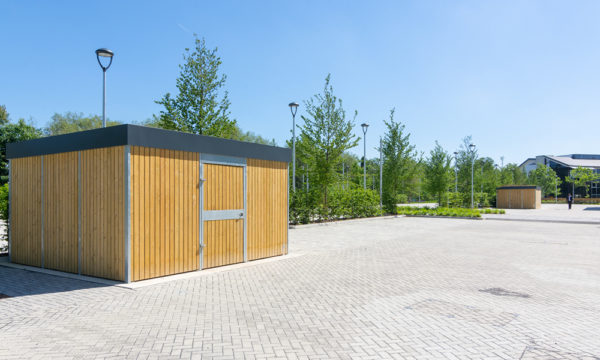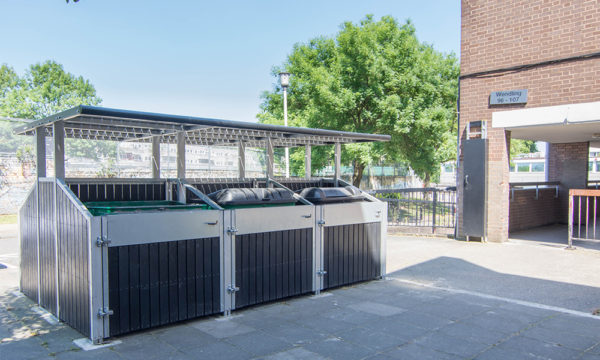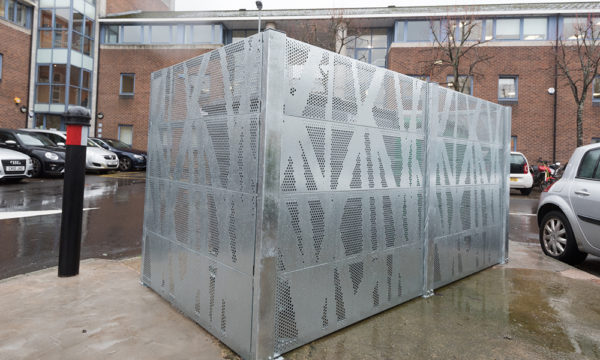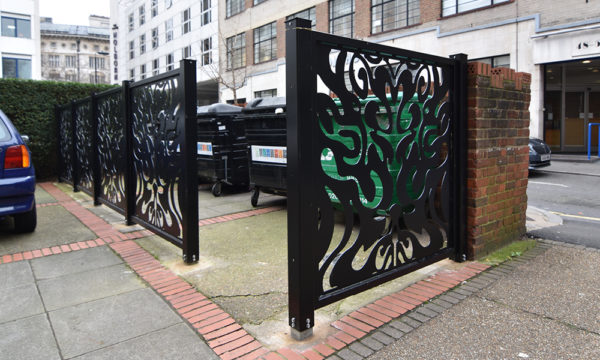metroSTOR waste and recycling storage solutions are an essential tool in the management of waste-streams, helping to increase recycling successes while reducing associated fire risk, litter, fly-tipping and anti-social behaviour.
Bin stores have historically been located out of the general line of sight, and therefore tend to attract crime and antisocial behaviour. metroSTOR bin stores can be located in prominent positions without unacceptable visual impact or fire risk, creating a facility where users can feel safe.
An essential reduction in fire risk is achieved with metroSTOR products that are designed to secure waste and recycling bins away from dwellings, ensuring that fire is contained in the event of a bin being set alight. Wheelie bin storage solutions are available in a range of enclosed storage units, recycling centres and bin room buildings.
Waste and Recycling Bin Storage Solutions
Safe and easy disposal of waste is a planning requirement for all new developments, whether residential, commercial, or industrial. Many existing properties do not have facilities that are suitable for current volumes, segregation requirements, and collection frequencies.
The management of communal facilities or public access, e.g. flats and streets can be challenging since residents do not have the luxury of daily or constant site management, and external interference is more likely. By making waste and recycling hubs accessible to everyone, we can achieve numerous economic, environmental, and social gains.
Fire Safety
There are estimated to be 50,000 bin fires attended by FRS’s across the UK every year. Some of these arise from internal refuse chutes and bin chambers which are poorly maintained or no longer fit for purpose, others from bins stored externally without sufficient thought given to their location and the specification of any store.
Putting the bins too close to an opening, such as a door or window, can result in the fire spreading quickly, putting lives at risk. The Government advice on FRA’s for Premises with Sleeping Accommodation recommends that bins are secured, so they can’t be pushed up against dwellings and set alight. The CFPA-E guidance describes the method for calculating safety distances.
How do metroSTOR bin housings reduce fire risk?
metroSTOR bin housings reduce the risk of fire by securing bins at a safe distance from dwellings. This distance varies according to the fire load, and if it can’t be achieved due to a lack of space, then the bins should be secured with an enclosure giving 30 minutes fire resistance.
metroSTOR bin housings also reduce the fire load around dwellings by eliminating side-waste and fly-tipping, which apart from being unsightly, an environmental health hazard and costly to remove, are also potential triggers for arson.
Fire retardant cladding options can be specified to reduce risk where 6m building clearance cannot be achieved for Bin Store Units and Bin Room Buildings.
How do I calculate the safety distance?
The safety or separation distance varies according to the fire load. The most reliable method of calculating this is to take the width of the bins facing the dwelling and add 2.5 m. This safety distance is measured from any point at which fire could enter the dwelling, including door and window openings, extractor fans and boiler flues, and any combustible elements.
Fly-tipping
Side waste occurs because residents find it difficult to access and use the bin store or because when they get there, the bins are too full. This can be because there is insufficient capacity for the number of users and the collection frequency, but it can also be because the store is being used by unauthorised people, such as nearby residents or passers-by.
How does metroSTOR reduce side waste and fly-tipping?
metroSTOR bin housings reduce this by making it easy for residents to dispose of the waste and recycling responsibly. By placing the correct number of bins in strategic locations throughout a neighbourhood, as well as leaving the lids open within the housings, residents will not have to unlock doors, enter a foul-smelling bin room, or touch dirty bin lids.
Overflowing bins can occur because of insufficient capacity, unauthorised use or missed collections. Access control needs to be considered to prevent unauthorised use by neighbouring residents. A highly configurable lock case accommodates latch only, lock or deadlock with key management and keypad options for our Bin Store Units, Bin Room Buildings and Recycling Centres.
Good housekeeping and screening the bins from public view can dramatically reduce the incidence of drive-by fly-tipping. Once you’ve eliminated any capacity, accessibility and ease-of-use issues for residents, you can then use CCTV and issue penalties to deal with any persistent offenders.
Waste Management and Recycling
Waste volumes have trebled over the last 40 years, creating a huge impact on the environment. There are some particularly hard-to-reach areas for recycling such as flats, terraces, and HMOs due to lack of storage space and social deprivation. This is further exacerbated by the huge increase in online purchasing, home delivery and cardboard packaging. Most councils now charge for bulky waste removal, which increases the incidence of fly-tipping by both residents and passers-by.
How do metroSTOR bin housings help increase recycling rates?
The key to effective recycling participation lies in making it as easy to dispose of recycling as it is to dispose of refuse. The bins should ideally be co-located and contained within bin housings wherever possible and made accessible for each block; this will sometimes mean decommissioning internal bin rooms and refuse chutes. It is also critical to eradicating contamination of the separate recycling streams, as this will often lead to missed collections, overflowing bins and excessive clean-up costs. A great example of this is shown in our case study of Brentford Towers in the London Borough of Hounslow.
metroSTOR bin stores help to increase recycling participation and reduce contamination of waste streams by having, in addition to very clear graphic signage, a series of specially-designed apertures that physically prevent materials from being put in the wrong bin.
Read more on our Bin Storage FAQs page.
